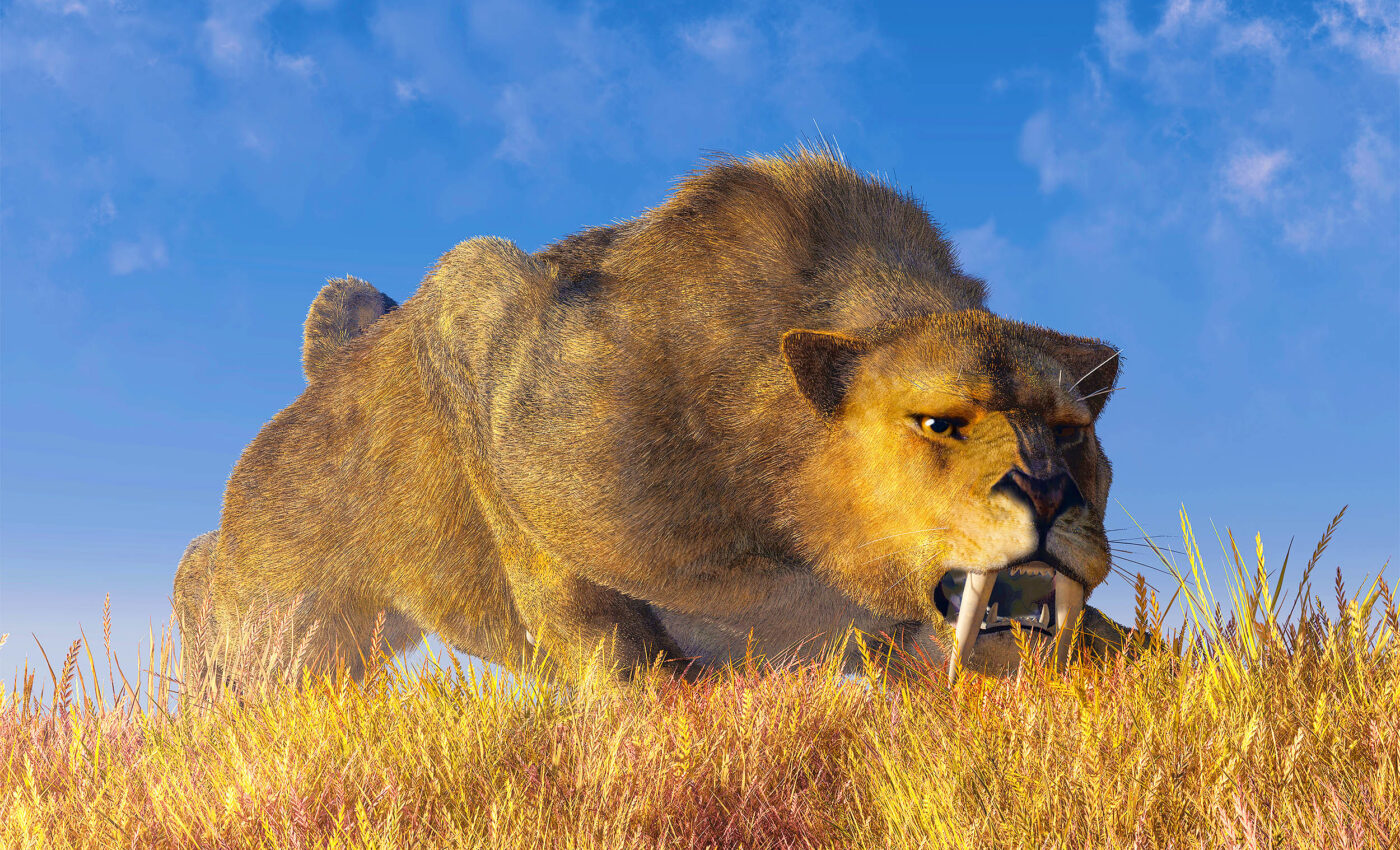
Young saber-toothed cats had double fangs, but for good reason
The formidable, saber-like fangs of Smilodon fatalis, also known as saber-toothed cats, are a symbol of prehistoric ferocity and a subject of scientific fascination.
These fangs, famously preserved at the La Brea Tar Pits in Los Angeles, intrigue visitors and scientists alike with their unique structure and evolutionary purpose.
Researchers found some of these fangs with a curious feature: a double set of teeth comprising both a baby and a permanent tooth within the same socket.
Smilodon fatalis and double fangs
Jack Tseng, an associate professor of integrative biology, has dedicated years to studying these peculiar specimens. His upcoming research publication illuminates the evolutionary advantages of this dental arrangement.
Tseng’s study suggests that the presence of the milk tooth alongside the erupting permanent saber tooth plays a critical role in preventing the tooth from breaking under lateral pressures.
This insight was supported by advanced computer modeling and physical tests using 3D-printed replicas of saber teeth.
Initially, Tseng and his team proposed that the baby tooth acts as a stabilizing buttress during the eruptive phase of the permanent tooth.
They based this hypothesis on growth data, which shows that saber-toothed cats retained this dual-tooth system for up to 30 months during their adolescence.
“Imagine a timeline where you have the milk canine coming out, and when they finish erupting, the permanent canine comes out and overtakes the milk canine, eventually pushing it out,” noted Tseng.
Predator evolution of Smilodon fatalis
The implications of this study extend beyond dental mechanics to insights into the predatory behavior and survival strategies of saber-toothed cats.
The dual-fang stage likely provided young Smilodon with a ‘learning curve’ period, during which they could experiment with their hunting techniques without the immediate risk of damaging their formidable weapons.
Tseng suggests that this prolonged dual-tooth stage acted as an evolutionary adaptation, allowing the young predators to take risks and learn effective hunting strategies while under the protective ‘insurance policy’ of the milk tooth.
“The double-fang stage is probably worth a rethinking now that I’ve shown there’s this potential insurance policy, this larger range of protection,” Tseng explained. “It allows the equivalent of our teenagers to experiment, to take risks, essentially to learn how to be a full-grown, fully fledged predator.”
Beam theory
Tseng’s research incorporated beam theory, an engineering principle typically used to assess the structural strength and behavior of materials under various stress conditions.
By utilizing this theory for the study of Smilodon’s saber teeth, he was able to create simulations that mimicked how these teeth would react under different types of stress, focusing particularly on lateral bending — how the teeth would bend side to side under pressure.
His analysis showed that although the bending strength of the saber teeth — how much force they could withstand before bending — remained relatively unchanged, their stiffness, or how much they resisted bending when force was applied, diminished as the teeth grew longer.
Function of the Smilodon fatalis milk tooth
This finding suggests that the longer the tooth, the more prone it was to bend under force, potentially leading to breakage.
Crucially, Tseng found that the presence of a milk tooth alongside the permanent tooth in young Smilodon played a significant role in enhancing the overall structural integrity of the growing fang.
The milk tooth seemed to serve as a supportive structure, improving the alignment of the tooth’s stiffness with its bending strength.
This improved alignment significantly reduced the risk of the saber tooth breaking during hunting, particularly when catching and subduing prey.
The combination of the baby and permanent teeth provided a critical balance, ensuring that young saber-toothed cats could effectively and safely develop their hunting skills without the immediate risk of damaging their essential fangs.
Broader implications
While the focus of Tseng’s study was Smilodon fatalis, the findings have broader implications for understanding other saber-toothed species as well.
Moreover, the presence of similar dental features in other species suggests that this adaptation could be more widespread than previously thought. This opens new avenues for research into the evolutionary pathways that led to the development of such specialized predatory adaptations.
Tseng’s work not only enhances our understanding of one of the most iconic predators of the Pleistocene but also invites us to reconsider how we view the growth and development of these fascinating creatures.
As these investigations continue, they not only illuminate the past but also enrich our broader understanding of evolutionary biology and the mechanics of survival in the natural world.
The full study was published in the journal The Anatomical Record.
—–
Like what you read? Subscribe to our newsletter for engaging articles, exclusive content, and the latest updates.
Check us out on EarthSnap, a free app brought to you by Eric Ralls and Earth.com.
—–













